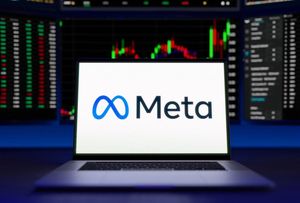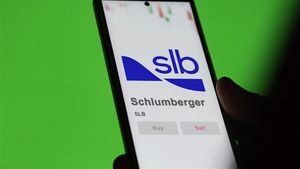
Oxford Lane Capital Corporation (NASDAQ: OXLC), a closed-end management investment company celebrated by some for its eye-popping dividend yield, is facing increasing scrutiny over its long-term investment strategy. A critical analysis, particularly relevant as of October 20, 2025, suggests that the company's aggressive pursuit of high distributions through Collateralized Loan Obligation (CLO) equity and junior debt tranches may be fundamentally eroding shareholder value rather than fostering sustainable growth. This paradigm, critics argue, transforms the promise of compounding returns into a stark reality of capital destruction for common shareholders.
The core of the concern lies in OXLC's consistent net asset value (NAV) erosion, a trend exacerbated by its high-risk CLO equity investments, a potentially unsustainable dividend policy, and a history of underperforming broader market indices. Despite its appeal to income-focused investors, a closer look at the company's financial mechanics and historical performance paints a picture of a strategy that, while generating significant cash flow, fails to preserve or grow the underlying capital, raising serious questions about its viability as a long-term investment.
The Cracks in the High-Yield Facade: Unpacking OXLC's Strategy
Oxford Lane Capital's investment strategy is centered on acquiring highly leveraged, high-yielding equity and junior debt tranches of Collateralized Loan Obligations (CLOs). These CLOs are complex financial instruments that pool together senior secured loans made to companies, often those with lower credit ratings. While CLO equity offers the highest potential returns within the CLO structure, it also bears the brunt of the risk, absorbing the first losses if the underlying corporate loans default. This inherent risk is a primary driver of the value destruction argument.
A significant timeline of events and performance metrics underscores these concerns. OXLC's NAV per share has shown a persistent downward trend, declining, for instance, from $4.82 in December 2024 to $4.12 by June 2025, representing a 14.5% drop. This erosion is not merely due to market fluctuations but is deeply tied to the mark-to-market volatility of its CLO investments and the increasing default rates anticipated in the leveraged loan market. The distress ratio—loans priced below 80% of par—within CLO portfolios has risen from 3.5% in Q1 2024 to 4.4% in Q1 2025, signaling deteriorating credit quality that directly threatens OXLC's asset base. Furthermore, the company completed a 1-for-5 reverse stock split on September 8, 2025, a move often interpreted by the market as a sign of underlying financial weakness rather than a solution to fundamental issues.
Key players involved include OXLC's management team, responsible for portfolio construction and dividend policy, and the institutional investors and retail shareholders who are either attracted by the yield or are bearing the brunt of the NAV decline. Initial market reactions to OXLC's performance and strategic decisions, such as the reverse stock split and continued share dilutions, have often been negative, contributing to the stock frequently trading at a discount to its reported NAV. This market skepticism reflects concerns about the true value and sustainability of its income-generating assets.
Market Winners and Losers: The Ripple Effect of OXLC's Approach
The investment strategy and performance of Oxford Lane Capital (NASDAQ: OXLC) create distinct winners and losers within the financial ecosystem, particularly affecting the broader CLO market and income-focused investors.
Potential Losers:
- Common Shareholders of Oxford Lane Capital: The most direct losers are OXLC's common shareholders, especially those with a long-term investment horizon. Despite receiving high monthly dividends, the persistent erosion of Net Asset Value (NAV) per share and significant share price depreciation means that the total return for many investors has been negative over extended periods. For instance, OXLC generated an annualized total return of -1.51% over the past ten years (ending October 2025), starkly underperforming the S&P 500's average annual return of 12.57% during the same period. Year-to-date in 2025, OXLC returned -26.74%. This indicates that the high dividend often represents a return of capital rather than a return on capital.
- Unsophisticated Income Investors: Investors solely focused on high yield without a deep understanding of the underlying risks of CLO equity and the implications of NAV erosion may be particularly vulnerable. They might perceive the high dividend as sustainable income, only to find their principal diminishing over time.
- CLO Market Sentiment (Potentially): While OXLC is just one player, its perceived struggles could, in some extreme scenarios, contribute to negative sentiment towards the broader CLO equity market, especially if its issues are seen as systemic rather than company-specific.
Potential Winners:
- OXLC Management and Related Entities: Management fees, which are a significant portion of the interest income generated by the portfolio (e.g., $112 million or 26% of interest income last year), represent a consistent revenue stream for the company's managers, regardless of the common stock's total return performance. The expense ratio is notably high, at 12.45% as of October 11, 2025, with management fees making up 2.88%.
- Underwriters of Equity Offerings: OXLC frequently engages in "at-the-market" equity offerings to raise capital. Investment banks that underwrite these offerings benefit from fees generated by fees generated by issuing new shares, even if these offerings contribute to shareholder dilution. For example, 25.8 million shares were issued in Q1 2026 (projected) or $300.5 million in Q1 2025.
- Short-Term Traders/Arbitrageurs: Sophisticated traders who can accurately predict market sentiment shifts or exploit the volatility between OXLC's share price and its NAV might find short-term trading opportunities, though this is a high-risk strategy.
- Investors in OXLC's Baby Bonds or Preferred Shares: Some analysts suggest that OXLC's baby bonds or preferred shares, such as those issued by Oxford Lane Capital Corp. (NASDAQ: OXLCM) or Oxford Lane Capital Corp. (NASDAQ: OXLCN), might offer better risk-adjusted returns. These instruments have stable distributions and priority in claims over earnings compared to common stock, providing a more predictable income stream without the direct exposure to CLO equity volatility.
The impact on these entities is primarily driven by OXLC's unique position within the CLO market, its aggressive dividend policy, and its capital-raising activities. The ongoing debate about its value proposition highlights the complex interplay between high yield and capital preservation in specialized investment vehicles.
Broader Implications: A Bellwether for High-Yield CLO Investing?
Oxford Lane Capital's (NASDAQ: OXLC) situation is not merely an isolated case; it offers a critical lens through which to examine broader industry trends, particularly within the realm of high-yield Collateralized Loan Obligation (CLO) investing and the business development company (BDC) structure. Its challenges highlight the inherent risks and potential pitfalls for investors chasing outsized income in complex financial instruments.
This event fits into the broader trend of increased scrutiny on income-generating vehicles that rely on highly leveraged, less liquid assets. The CLO market, while a crucial component of corporate finance, has faced cyclical concerns regarding credit quality, interest rate sensitivity, and transparency. OXLC's struggles with NAV erosion and total return performance could be seen as a bellwether, signaling potential vulnerabilities for other BDCs or funds heavily invested in the riskiest tranches of CLOs, especially as global economic conditions and corporate debt levels fluctuate. The rising leveraged loan default rates, nearly doubling historical averages, pose a significant threat across the entire CLO ecosystem.
Potential ripple effects could extend to other publicly traded BDCs or closed-end funds that employ similar strategies, prompting investors to re-evaluate their exposure to CLO equity. Partners, such as the CLO managers whose products OXLC invests in, might face increased pressure if a significant investor like OXLC signals distress or shifts its investment thesis. Regulatory bodies are consistently monitoring the BDC and CLO markets for systemic risks. While OXLC's issues might not immediately trigger new regulations, a sustained period of underperformance and shareholder value destruction across multiple similar entities could certainly invite closer examination of disclosure requirements, leverage limits, and asset valuation methodologies within the sector.
Historically, there are precedents for investment vehicles that prioritize high distributions over capital preservation eventually facing significant challenges. Comparisons can be drawn to certain mortgage REITs or other high-yield instruments that, during periods of market stress, have seen substantial capital impairment despite attractive dividend payouts. The key takeaway from these historical parallels is that a high yield alone is an insufficient metric for long-term investment success; the sustainability of that yield and the preservation of underlying capital are paramount. OXLC's reliance on "Core Net Investment Income" (Core NII), which includes cash distributions from CLO equity and often exceeds GAAP Net Investment Income (NII), echoes past concerns about non-GAAP metrics potentially obscuring fundamental financial health.
The Road Ahead: Navigating Uncertainty in High-Yield Markets
The path forward for Oxford Lane Capital (NASDAQ: OXLC) and its investors is fraught with both short-term challenges and long-term uncertainties. Given the persistent Net Asset Value (NAV) erosion and the inherent risks of its investment strategy, several scenarios and adaptations may emerge.
In the short term, investors should anticipate continued volatility in OXLC's share price, heavily influenced by credit market conditions, interest rate movements, and the performance of underlying leveraged loans within its CLO portfolio. The company may continue to engage in "at-the-market" equity offerings, which, while providing capital, can further dilute existing shareholders if executed at a discount or without sufficient accretive benefit. The sustainability of its high monthly dividend will remain a critical watchpoint; any further cuts would likely signal deeper distress and could trigger additional share price declines. The recent 1-for-5 reverse stock split on September 8, 2025, while adjusting the share price, does not address fundamental issues and could precede further price deterioration if underlying problems persist.
Longer term, OXLC may face pressure to strategically pivot or adapt its investment strategy. This could involve diversifying its CLO exposure, potentially moving into less risky tranches, or exploring other asset classes that offer more stable capital preservation. However, such a pivot would likely come at the expense of its current high-yield profile, which is its primary draw for many investors. Market opportunities or challenges may emerge for competitors who can demonstrate a more balanced approach to income generation and capital preservation within the CLO space. For instance, CLO managers with robust credit underwriting and active portfolio management might gain favor. Regulatory scrutiny could also intensify, potentially leading to new guidelines on leverage or valuation, which would necessitate adaptations across the entire BDC and CLO equity sector.
Potential scenarios range from a continued slow bleed of NAV and shareholder value, punctuated by dividend cuts and dilutive offerings, to a more aggressive strategic overhaul that could stabilize the company but fundamentally alter its investment proposition. A severe downturn in the leveraged loan market could accelerate the value destruction, potentially leading to more drastic measures. Conversely, a prolonged period of benign credit conditions could temporarily alleviate some pressure, but the fundamental issue of NAV erosion would likely remain given the structural risks of its CLO equity focus and high payout ratio.
A Sobering Outlook: Key Takeaways for Investors
The critical analysis of Oxford Lane Capital (NASDAQ: OXLC) offers a sobering lesson in the perils of chasing high yield without a rigorous examination of underlying asset quality and capital preservation. The key takeaway is that OXLC's investment strategy, heavily concentrated in the riskiest equity and junior debt tranches of Collateralized Loan Obligations (CLOs), appears to be a case of value destruction rather than compounding for common shareholders.
Moving forward, the market will likely continue to assess OXLC through the lens of its Net Asset Value (NAV) per share, its dividend coverage (particularly comparing GAAP NII to Core NII), and its total return performance. The persistent erosion of NAV, coupled with a long-term annualized total return of -1.51% over the past decade (ending October 2025), underscores that the high dividend has historically failed to compensate for capital losses. Investors should be wary of the company's reliance on non-GAAP metrics to justify its dividend and the dilutive effects of frequent equity offerings.
What investors should watch for in the coming months includes any further significant declines in NAV, changes in the monthly dividend payout, and any explicit strategic shifts announced by management. Increased leveraged loan defaults or a broader tightening of credit markets would likely exacerbate OXLC's challenges. For those seeking income, it might be prudent to consider alternative investments, potentially even OXLC's own preferred shares or baby bonds (e.g., NASDAQ: OXLCM, NASDAQ: OXLCN), which offer a more stable income stream with higher priority in the capital structure, mitigating some of the direct risks associated with CLO equity. Ultimately, the OXLC narrative serves as a powerful reminder that true investment success hinges on both income generation and the diligent preservation and growth of principal.
This content is intended for informational purposes only and is not financial advice






